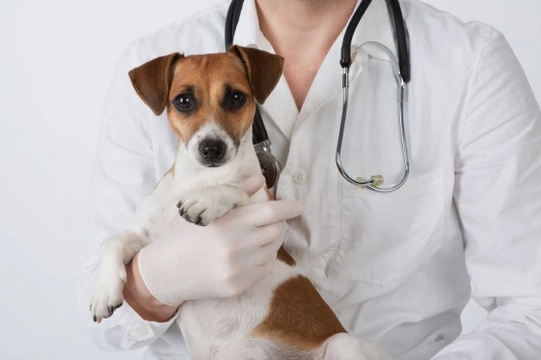
Chemotherapy in Cats and Dogs: What You Need to Know
Chemotheraphy is now approved for cancer treatment in small animals. Though it may come as a surprise to some, chemotherapy is highly effective in treating some forms of cancer in cats and dogs. It's not a choice all pet owners are willing to make, but treatment can add months or even years of life following a cancer diagnosis. As ever, it's important to discuss any concerns you have with your vet, as he or she knows your pet on an individual basis and can provide the best advice and guidance on treatment. However, as general overview this article will cover most basic information you should know before, during, and after your pet's chemotherapy treatments. Read on to find out how chemotherapy works, as well as the difference it can make for your pet.
What is chemotherapy?
Chemotherapy involves the use of cytotoxic (meaning cell-killing) or anticancer drugs that target and kill cells that reproduce rapidly. There are several different drugs currently accepted for use in this procedure, however they share a common trait: all involve the use of toxic substances to cause destruction on a cellular level. Unfortunately, this may mean that good normal cells are damaged along with dangerous cancer cells - hence chemotherapy's reputation as an extreme form of treatment. Chemotherapy may be used as a primary combatant against cancer, or alongside surgery and radiation therapy. Side effects include nausea, vomiting, diarrhoea, and reduced immune response. Patients undergoing chemotherapy should be consistently monitored for any signs of overdose and should be evaluated before and after treatment.
How are chemotherapy drugs used?
Typically, all cytoxic drugs will be given in separate, carefully timed doses to prevent too much damage to healthy tissue, but still prevent cancer cells from growing in number. Only your vet will be able to determine how frequently your pet needs treatment, which may vary depending on the cytotoxic agent used. There are three major phases of chemotherapy, which may occur over the course of several months. Induction therapy:
- An intensive form of treatment capable of lowering tumour mass into remission.
Maintainence therapy:
- Helps prolong the remission period and maintain the results achieved through induction.
Rescue therapy:
- Used when induction therapy is not as successful as initially hoped, this form of therapy is more aggressive and intended to stop the patient from experiencing a relapse in treatment.
Some cytotoxic agents may be used in conjunction with other forms of anticancer therapy, improving results and increasing survival rates.
How is treatment carried out?
The cytotoxic drugs used in chemotherapy come in both tablet and injectable formats. Tablets, of course, are given orally, while injections may be given in the skin, muscle, or directly into the vein. In the case of the latter, your veterinary surgeon may fit your pet with an IV catheter to prevent peripheral tissue damage and protect the injection site in cases when the drugs must be administered slowly.
What types of cancer can chemotherapy fight?
In order to have the maximum effect, chemotherapy should be used against rapidly growing cancer cells that are sensitive to cytotoxic effects. Not all forms of cancer fit this double bill, and so chemotherapy cannot help all patients.As a primary treatment, cytotoxic drugs are potent against forms of cancer that are malignant or prone to spreading throughout the body, especially via the lymphatic system. In conjunction with other forms of treatment, such as surgery, chemo may be useful against certain types of bone or organ cancer, especially as a response to the spread of malignant cells from one part of the body to another.Chemotherpay may not be useful against slow-growing forms of cancer, nor is it an appropriate choice for the treatment of benign tumours.
What are the alternatives?
Cats and dogs suffering from isolated or solid tumours may be candidates for surgery rather than chemotherapy. Mast cell tumours and sarcomas are usually removed on the operating table, and prognosis will vary on a case-by-case basis. Radiotherapy, or treatment of cancer with x-rays, may also be used as a complement to surgery or chemotherapy, or on it's own. Unfortunately, all mainstream forms of treatment may cause complications, including serious side effects and discomfort. Your vet will recommend a course of action that is most likely to produce the best outcome possible.
Safety
Cytotoxic drugs by their very nature are not safe. If handled incorrectly, they can cause tissue damage, poisoning, and even foetal deformity in pregnant women. Whilst your pet undergoes chemotherapy treatments, be sure to take extra care when cleaning up droppings or bodily fluids by protecting your skin and washing your hands immediately after handling discharged substances. Always wear gloves when handling cytotoxic drugs - never let any tablets come into contact with your skin. In case of accidental exposure, contact a poisoning advisory service immediately.
Quality of life
Deciding whether or not to choose chemotherapy can be a difficult decision, and it is unfortunately one that many pet owners may have to make during the lifetime of their pet. Know that chemotherapy may not always rid your pet of cancer completely, but can add several happy months of life. If your pet is diagnosed with cancer, make sure that you understand all options available to you by asking your vet questions and doing some research on your own if necessary. In the end, you must make what you feel is the best choice for the wellbeing for your pet, whether you proceed with treatment or not.The good news is that cats and dogs generally respond well to treatment, and side effects can usually be reduced with a range of complementary drugs. Most veterinary surgeons will treat pets with levels of drugs far below high-risk toxicity levels, meaning that there is less to lose and more gain in modern veterinary chemotherapy.



